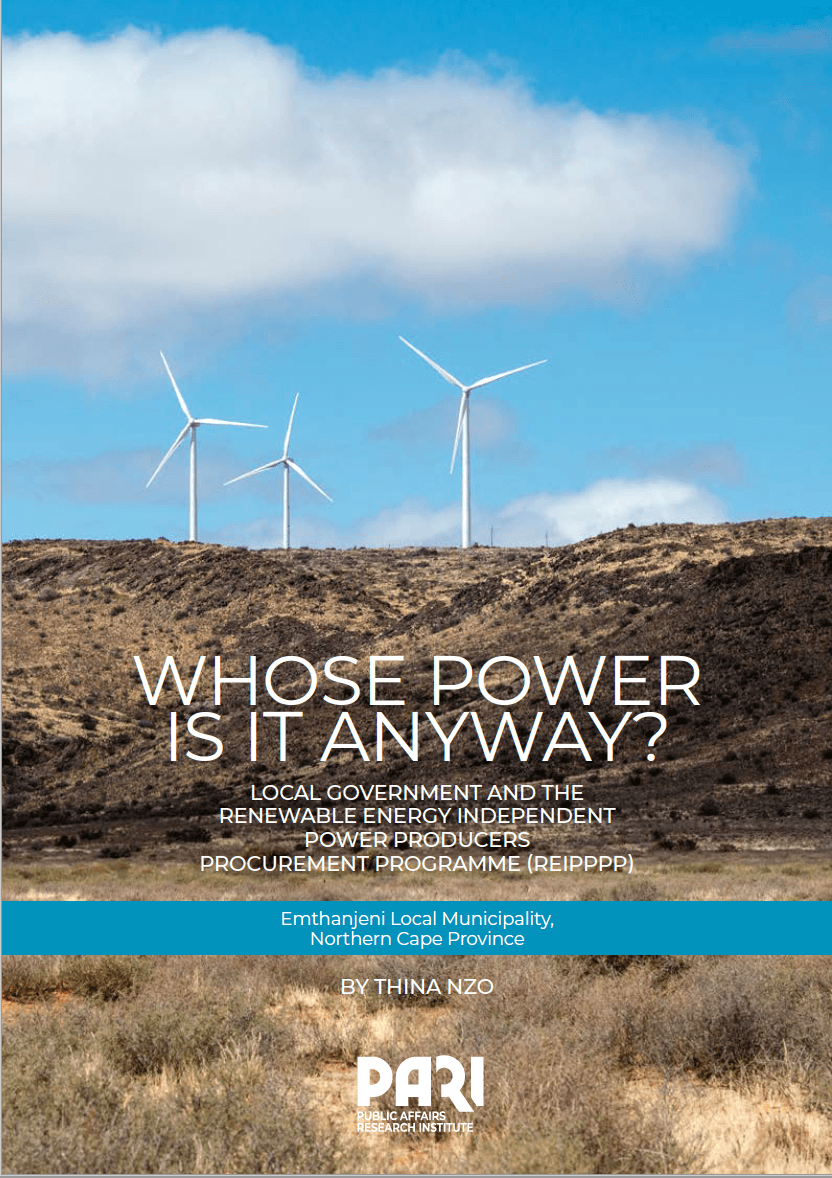A report by Thina Nzo.
We owed Eskom R106 million. Eskom cut us [the municipality] from the electricity supply for two days during lockdown, when people lost their jobs and there was no revenue generated by our municipality. We were forced by Eskom to fork out R19 million to reconnect to the grid. We even had electricity protests because people wanted to know why they are paying so much for electricity and still having electricity cuts while we have the IPPs on our back door. This is a valid question … why can’t we [the municipality] negotiate with these IPPs to sell us [the municipality] cheaper electricity directly? — Mayor of eMthanjeni Municipality, 11 November 2020
The research in this report reveals that community ownership and redistribution of resources back into the host communities through independent power producer (IPP) community trusts and socioeconomic development (SED) contributions has not yielded tangible and sustainable socioeconomic development in local communities. The current practices and outcomes of the renewable energy programme do not reflect the energy democracy agenda, which advocates for fair access to energy, participation through democratically planned and community-owned and -operated renewable energy systems that serve the public interest and deliver tangible community benefits, such as decent and stable employment, deracialised local economic transformation, and new public institutions in rural municipalities.
Without direct access to clean, affordable renewable energy, and IPP community trusts and SED resources to socially and economically empower IPP local host communities in the margins out of poverty and unemployment, then whose power is it anyway?
The research presented in this report argues that the centralised policymaking approach and economic path-dependency in spatial development of renewable energy infrastructure in the REIPPP programme contributes to the reproduction of structural disempowerment and displacement of rural municipalities into the margins of policymaking.



